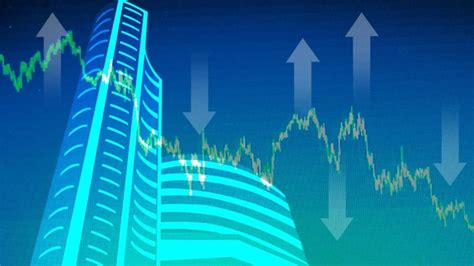In the dynamic and often unpredictable world of finance, market volatility stands as an inherent, ever-present force. Far from a mere blip, it’s the natural rhythm of economic cycles, geopolitical shifts, technological advancements, and shifting investor sentiment. For both seasoned financial professionals and individual investors, understanding and effectively navigating market volatility isn’t just about weathering storms; it’s about identifying opportunities, safeguarding capital, and optimizing long-term returns. Ignoring or reacting impulsively to market swings can lead to significant financial setbacks, making it a critical topic for anyone involved in investing. This comprehensive guide will delve into the fundamental nature of market volatility, dissect its causes, reveal its often-misunderstood impacts, and equip you with robust, research-backed strategies to not only survive but thrive amidst turbulent market conditions, ensuring your financial content drives high Google AdSense engagement through its practical value.
Market Volatility: What It Is and Isn’t
At its simplest, market volatility refers to the rate at which the price of a security, a market index, or a commodity increases or decreases over a given period. It’s often measured by statistical metrics like standard deviation or variance, quantifying how widely prices deviate from their average. High volatility signifies sharp, often rapid price fluctuations, while low volatility indicates more stable, gradual price movements.
It’s crucial to distinguish volatility from risk. While often conflated, they are not interchangeable. Volatility is a measure of price dispersion, whereas risk encompasses the potential for permanent loss of capital. A highly volatile asset might offer significant upside potential alongside its downside, but it doesn’t automatically mean a guaranteed loss. Conversely, a seemingly stable asset might hide underlying risks that aren’t reflected in its short-term price movements. However, for most investors, higher volatility does imply higher short-term risk to their capital and psychological well-being.
Volatility can affect various financial instruments:
- Stocks: Individual company shares can experience significant swings based on earnings reports, industry news, or broader market sentiment.
- Bonds: While generally less volatile than stocks, bond prices can fluctuate due to changes in interest rates or credit ratings.
- Commodities: Prices of oil, gold, agricultural products, etc., are highly sensitive to supply and demand dynamics, geopolitical events, and economic forecasts.
- Currencies: Exchange rates constantly move based on economic data, central bank policies, and global trade flows.
Understanding these distinctions is the first step toward building a resilient investment approach capable of navigating market volatility with confidence.
The Multifaceted Causes of Market Volatility
Market volatility rarely stems from a single cause; rather, it’s the culmination of various interconnected factors operating at global, national, and company-specific levels. Identifying these drivers can provide crucial context for understanding market behavior.
A. Economic Factors: The Macro Landscape
Broad economic indicators and policies are powerful shapers of market sentiment and, consequently, volatility.
- Interest Rate Changes: Decisions by central banks (like the Federal Reserve in the U.S. or Bank Indonesia in Indonesia) to raise or lower interest rates directly impact borrowing costs for businesses and consumers. Higher rates can slow economic growth, reduce corporate profits, and make bonds more attractive than stocks, leading to equity market declines and increased volatility.
- Inflation/Deflation: High or runaway inflation erodes purchasing power and corporate margins, causing investor unease. Deflation, while rare, signals a severe economic contraction, also leading to uncertainty. Both extremes trigger market turbulence as investors adjust their expectations for future earnings and economic stability.
- GDP Growth/Contraction: Strong Gross Domestic Product (GDP) growth typically signals a healthy economy, boosting investor confidence. A slowdown or contraction signals recessionary fears, leading to sell-offs and increased volatility.
- Employment Data: Key reports like unemployment rates and job creation figures provide insights into consumer spending power and economic health. Weak numbers can trigger market declines.
- Corporate Earnings Reports: Company-specific volatility often spikes around quarterly earnings announcements. If earnings miss expectations or future guidance is weak, stock prices can plummet, affecting broader market indices if major companies are involved.
B. Geopolitical Events: Global Shocks
International relations, conflicts, and political instability can send immediate shockwaves through global markets.
- Wars and Conflicts: Geopolitical tensions or outright military conflicts create immense uncertainty, disrupt supply chains, affect commodity prices (especially oil), and can severely depress investor confidence.
- Political Instability: Elections, changes in government, social unrest, or policy shifts within major economies can introduce unpredictability, leading to capital flight or market corrections.
- Trade Wars and Sanctions: Disputes between major trading blocs or nations can disrupt global commerce, impact multinational corporate profits, and create significant market uncertainty.
- Natural Disasters and Pandemics: Events like earthquakes, hurricanes, or global health crises (as seen with COVID-19) can cause widespread economic disruption, supply chain breakdowns, and fear, leading to sharp market declines.
C. Technological Advancements and Disruptions
While often drivers of long-term growth, rapid technological shifts can create short-term volatility.
- Disruptive Innovations: New technologies can render existing industries or business models obsolete (e.g., streaming services vs. traditional cable). This creates winners and losers, leading to significant stock price swings for affected companies.
- Cyberattacks: Major cyberattacks on critical infrastructure or large corporations can lead to operational disruption, data breaches, and a loss of investor confidence in the affected entities and sectors.
- Algorithmic Trading: A significant portion of market trades are now executed by algorithms. These programs can react to news or price movements instantly and at high frequency, sometimes amplifying volatility or triggering “flash crashes” due to rapid, automated selling.
D. Investor Sentiment and Psychology
Human emotion, often irrational, plays a massive role in day-to-day market movements and volatility.
- Fear and Greed: These two powerful emotions often drive market bubbles (excessive greed) and crashes (widespread fear). Panic selling during downturns can accelerate declines, while irrational exuberance can inflate asset prices beyond their fundamental value.
- Herd Mentality: Investors often follow the crowd, buying into rising markets and selling into falling ones, sometimes without independent analysis. This collective behavior can amplify price swings.
- News and Rumors: The 24/7 news cycle and social media can rapidly disseminate information (and misinformation), leading to quick, sometimes overreactive, market movements.
- Expectations vs. Reality: Market prices often reflect future expectations. When reality deviates significantly from these expectations (e.g., an earnings miss, a policy shift), volatility spikes as investors re-evaluate.
The Impacts of Market Volatility: A Double-Edged Sword
Market volatility is often portrayed negatively, but it presents both significant challenges and compelling opportunities. Understanding these impacts is crucial for strategic decision-making.
A. Challenges and Risks
For many, volatility is synonymous with fear and potential loss.
- Loss of Capital: The most direct and feared impact. Rapid downturns can erode portfolio value, especially for those who need to access funds in the short term.
- Psychological Stress: Constant market swings can induce anxiety, fear, and panic, often leading to irrational decisions like selling at the bottom (capitulation).
- Reduced Liquidity: In extreme volatile periods, buyers can disappear, making it difficult to sell assets at a fair price.
- Increased Trading Costs: Frequent buying and selling in response to volatility can incur higher transaction fees and taxes, eroding returns.
- Uncertainty for Businesses: Volatility can make it difficult for companies to plan for the future, raise capital, or predict consumer behavior, potentially impacting economic growth.
B. Opportunities for Astute Investors
For those prepared, volatility can be a source of significant advantage.
- Buying Opportunities: Downturns driven by fear, rather than fundamental deterioration, can present opportunities to buy quality assets at discounted prices (e.g., “buying the dip”).
- Averaging Down: Investors can use volatility to gradually increase their holdings in fundamentally strong assets at lower average costs through dollar-cost averaging strategies.
- Rebalancing Portfolios: Volatility can shift asset allocation away from target percentages. Rebalancing allows investors to sell overperforming assets (potentially at a high) and buy underperforming ones (at a low).
- Short Selling: Sophisticated traders can profit from falling prices by borrowing and selling securities, hoping to buy them back cheaper later. (High risk).
- Options and Derivatives: These complex financial instruments can be used to hedge against downside risk or speculate on price movements. (Very high risk, not for beginners).
- Identifying Stronger Companies: Volatility often exposes the weaker companies, while fundamentally strong ones with robust balance sheets and resilient business models tend to recover faster, making them clearer investment choices.
Robust Strategies for Navigating Market Volatility

Successfully navigating market volatility demands a disciplined, long-term perspective combined with strategic actions. Here are core strategies to implement.
A. Embrace a Long-Term Investment Horizon
This is arguably the most crucial strategy. Short-term market fluctuations are largely noise for long-term investors.
- Focus on Compounding: Recognize that the power of compounding truly works over decades, smoothing out short-term ups and downs.
- Ignore the Daily Noise: Avoid obsessive monitoring of market movements. Daily fluctuations are often driven by sentiment, not fundamentals.
- Historical Perspective: Remember that markets have always recovered from downturns over time. Historical data shows that long-term returns tend to be positive despite periods of volatility.
B. Diversification: Your Portfolio’s Shield
Diversification is the cornerstone of risk management. It means spreading your investments across various assets to avoid putting all your “eggs in one basket.”
- Asset Class Diversification: Invest across different asset classes like stocks, bonds, real estate, and commodities. Each typically performs differently in various market conditions.
- Geographic Diversification: Invest in companies and markets across different countries and regions to reduce exposure to the risks of a single economy.
- Sector Diversification: Spread investments across various industries (e.g., tech, healthcare, consumer staples) as different sectors perform well at different times.
- Company-Specific Diversification: Within equities, invest in a basket of companies rather than just a few to mitigate the impact of any single company’s poor performance.
- Diversification of Investment Styles: Consider a mix of growth stocks, value stocks, dividend stocks, etc.
C. Dollar-Cost Averaging: Automated Discipline
This strategy involves investing a fixed amount of money at regular intervals (e.g., monthly) regardless of the asset’s price.
- Removes Emotion: Automates investing, preventing impulsive decisions driven by fear or greed.
- Buys More When Prices are Low: When prices are down, your fixed investment buys more shares, effectively averaging down your cost basis.
- Reduces Timing Risk: You don’t need to predict market bottoms; you simply participate consistently.
D. Maintain an Emergency Fund
Having readily accessible cash outside your investment portfolio is vital during volatile times.
- Covers Unexpected Expenses: Prevents you from being forced to sell investments at a loss to cover emergencies (e.g., job loss, medical bills).
- Reduces Financial Stress: Knowing you have a safety net can help you remain calm during market downturns.
- Typically 3-6 Months of Living Expenses: The recommended size varies based on individual circumstances and job security.
E. Rebalance Your Portfolio Periodically
Over time, market movements can cause your asset allocation to drift away from your target. Rebalancing brings it back into alignment.
- Sell High, Buy Low: If one asset class (e.g., stocks) performs exceptionally well, it might grow to a larger percentage of your portfolio than desired. Rebalancing involves selling some of the “winners” and buying more of the “laggards” to restore original percentages.
- Risk Control: Ensures your portfolio’s risk level remains consistent with your initial strategy.
- Discipline: Forces a disciplined approach to managing allocation.
F. Focus on Quality Investments
During volatile periods, the difference between fundamentally strong companies and weak ones becomes stark.
- Strong Balance Sheets: Look for companies with low debt, ample cash, and stable revenue streams.
- Consistent Earnings: Companies with a history of predictable profitability are often more resilient.
- Sustainable Competitive Advantage (Moat): Businesses with unique products, strong brands, or high barriers to entry tend to weather storms better.
- Dividend-Paying Stocks: Dividends can provide income during market downturns, offering a buffer against falling capital values.
G. Understand Your Risk Tolerance
Your capacity and willingness to take on investment risk is a critical, often overlooked, factor.
- Financial Capacity: Can you genuinely afford to lose a portion of your investment without impacting your lifestyle or future goals?
- Psychological Comfort: How do you react to seeing your portfolio value drop? Can you stomach significant fluctuations without panic selling?
- Align Investments with Tolerance: Do not invest in assets that keep you awake at night. If high volatility causes severe stress, adjust your portfolio to be more conservative.
H. Educate Yourself Continuously
Knowledge is power, especially in volatile markets.
- Financial Literacy: Understand basic economic principles, investment vehicles, and market dynamics.
- Behavioral Finance: Learn about common psychological biases (e.g., confirmation bias, loss aversion) that can lead to poor investment decisions during volatility.
- Consult Experts: While self-education is important, consider engaging with a qualified financial advisor who can provide personalized guidance and help manage emotions.
I. Consider Hedging Strategies (Advanced)
For more sophisticated investors, certain tools can help mitigate downside risk.
- Options: Buying put options can provide a form of insurance against a stock or index falling below a certain price.
- Inverse ETFs: Exchange-Traded Funds (ETFs) designed to move inversely to a specific index or asset.
- Gold and Other Safe Havens: Historically, assets like gold, certain government bonds, or strong currencies have acted as safe havens during periods of market stress.
These strategies are complex and carry their own risks, requiring careful consideration and understanding.
The Psychological Battle: Overcoming Emotional Biases

One of the greatest challenges in navigating market volatility isn’t external market forces, but internal psychological biases. Emotions like fear, greed, and the herd mentality can lead to detrimental decisions.
A. The Fear of Missing Out (FOMO)
When markets are soaring, FOMO can lead investors to chase high-flying assets at inflated prices, exposing them to greater risk when the inevitable correction occurs.
B. Loss Aversion
Humans feel the pain of a loss more acutely than the pleasure of an equivalent gain. This bias often causes investors to hold onto losing positions too long, hoping for a recovery, or to sell winning positions too early to “lock in” profits, missing out on further gains.
C. Confirmation Bias
Seeking out and interpreting information in a way that confirms one’s existing beliefs. During a downturn, this can lead to seeking only negative news, reinforcing panic.
D. Herd Mentality
The tendency to follow the actions of a larger group, regardless of independent analysis. In markets, this manifests as panic selling during crashes or irrational buying during bubbles.
E. Recency Bias
Overweighting recent events or experiences when making decisions. A prolonged bull market can lead to complacency, while a recent crash can cause excessive pessimism, preventing re-entry into the market.
Strategies to Combat Emotional Biases:
- Have a Plan and Stick to It: A well-defined investment plan based on your goals and risk tolerance acts as a guardrail against impulsive decisions.
- Automate Investments: Dollar-cost averaging removes the emotional element from buying.
- Take a Break: During extreme volatility, step away from constant market news. Focus on other aspects of your life.
- Focus on Fundamentals: Revisit the underlying health and prospects of your investments, rather than just their fluctuating price.
- Seek Objective Advice: A financial advisor can provide an unbiased perspective.
The Future of Volatility: What to Expect
While predicting specific market movements is impossible, several trends suggest that market volatility will remain a consistent feature of the financial landscape.
A. Global Interconnectedness
The increasing interdependence of global economies means that an event in one corner of the world can quickly trigger ripple effects across markets worldwide.
B. Technological Acceleration
Rapid technological advancements, especially in AI and automation, can create both unprecedented growth and disruptive shifts, leading to periods of heightened volatility. Algorithmic trading will continue to play a role in amplifying rapid price movements.
C. Geopolitical Fluidity
Ongoing geopolitical tensions, shifts in power dynamics, and potential conflicts will remain significant sources of uncertainty for markets.
D. Climate Change and Environmental Risks
The increasing frequency and intensity of extreme weather events, alongside policy shifts toward sustainability, will introduce new layers of economic and market risk and opportunity.
E. Information Overload
The sheer volume and speed of information (and misinformation) dissemination can lead to rapid shifts in sentiment and increased market reactivity.
Despite these factors, the fundamental principles of prudent investing remain timeless. Adaptability, discipline, and a long-term perspective will continue to be the most powerful tools for navigating market volatility.
Discipline Through Market Storms
Navigating market volatility isn’t about avoiding market swings; it’s about developing the wisdom and discipline to manage them effectively. Volatility is an inherent characteristic of healthy, functioning markets, reflecting the constant interplay of economic forces, geopolitical events, technological shifts, and—crucially—human psychology. While its presence can be daunting, particularly for those witnessing their portfolio values fluctuate wildly, it also presents unparalleled opportunities for those who understand how to leverage it.
The key lies in shifting your mindset from reactive fear to proactive strategy. By embracing a long-term investment horizon, meticulously diversifying your portfolio, consistently employing dollar-cost averaging, maintaining a robust emergency fund, and periodically rebalancing, you build a powerful defensive framework. Furthermore, cultivating emotional discipline to counteract biases like FOMO and loss aversion is just as vital as any financial strategy. By focusing on quality investments and continuously educating yourself, you transform volatility from a threat into an ally. The future promises continued market dynamism, driven by global interconnectedness, rapid technological advancement, and evolving geopolitical landscapes. However, armed with knowledge and a strategic approach, investors can confidently master market volatility, transforming periods of uncertainty into pathways for sustained growth and long-term financial success. This pragmatic approach not only secures individual financial futures but also provides highly sought-after, evergreen content for those aiming to capture significant online interest and maximize their Google AdSense earnings.







